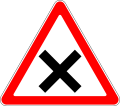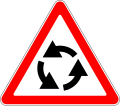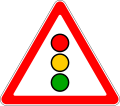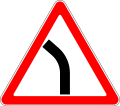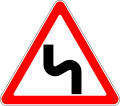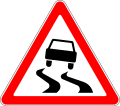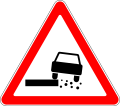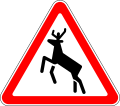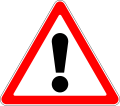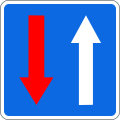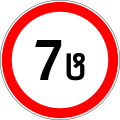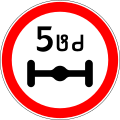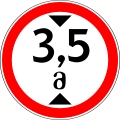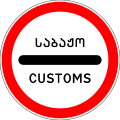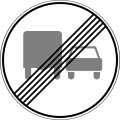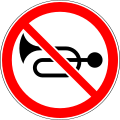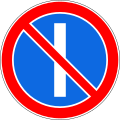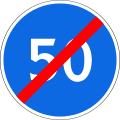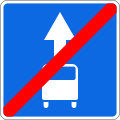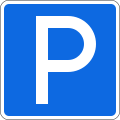This article includes a list of references, related reading, or external links, but its sources remain unclear because it lacks inline citations .(June 2025) |

Road signs in Georgia are similar to the road sign system of other post-Soviet states that ensure that transport vehicles move safely and orderly, as well as to inform the participants of traffic built-in graphic icons.[ clarify ] However, some road signs look a bit different from Soviet ones and closer to the European ones. These icons are governed by the Vienna Convention on Road Traffic and Vienna Convention on Road Signs and Signals.
Contents
- Gallery
- Warning signs
- Priority signs
- Prohibitory signs
- Mandatory signs
- Special regulation signs
- Service signs
- Information signs
- Additional panels
- References
Inscriptions on road signs in Georgia are usually written in two languages: Georgian and English, including the names of settlements. The Russian language is sometimes found on road signs in Georgia, mainly on old Soviet-era road signs, but now rarely used.












